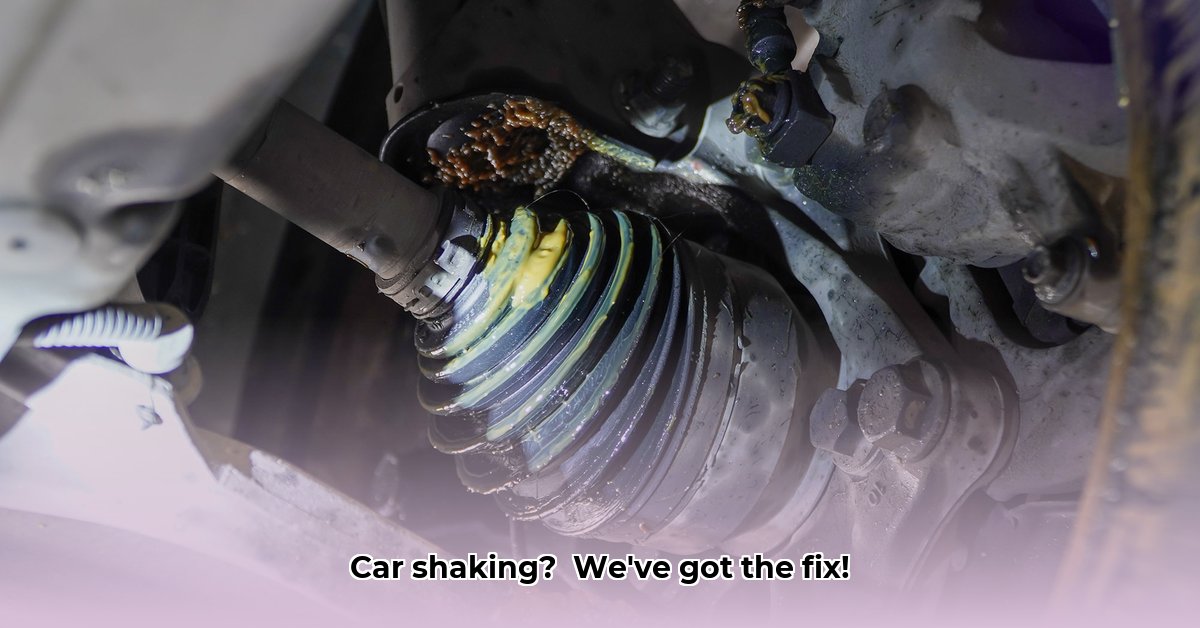
That unsettling shudder when you accelerate? Let's get to the bottom of it. A car shaking during acceleration is a common problem, but it doesn't have to be a nightmare. This guide will walk you through diagnosing and fixing the issue, from simple checks to more advanced troubleshooting. We'll cover everything you need to know to get back to smooth driving. We'll show you how to spot problems yourself, when to call in a professional, and how to prevent this from happening again. Let's get your car running smoothly!
Step 1: The Visual Inspection – A Quick Look Around
Before starting the engine, perform a thorough visual inspection. This is like a detective's first look at a crime scene – we're looking for obvious clues.
Check your tires for uneven wear, bulges, or embedded objects. Damaged rims could also be a culprit. Inspect your wheels and suspension components for loose parts, bent or broken components, and leaks. Even small leaks can cause significant problems. Don't forget to check under your car for drivetrain leaks or other potential issues. A simple visual observation can often reveal the source of the problem. Did you know that 80% of tire-related shaking issues are due to improper inflation or uneven wear?
Step 2: The Road Test – Let's Take It for a Spin
Now for the test drive! Pay close attention to when the shaking happens. Does it occur at low speeds, high speeds, or only when accelerating forcefully? Does the shaking change when you let off the gas or brake?
- Low-speed shaking: Often indicates balance issues or problems with front-end suspension and steering components (worn ball joints or control arm bushings).
- High-speed shaking: Suggests a drivetrain problem (axles, driveshaft, or CV joints).
- Shaking only under acceleration: Points towards a problem with the transmission of power from the engine to the wheels.
Accelerate at different speeds and from various situations. Note your observations! Record whether the shaking is worse on smooth or rough roads. These details are crucial for diagnosis.
Step 3: Component-Specific Troubleshooting
Based on your road test, let's investigate specific areas:
Drivetrain Issues:
- Unbalanced tires: A very common cause, especially at higher speeds. Uneven tire weight causes vibrations. Solution: Tire balancing.
- Worn CV joints (Constant Velocity joints): Transmit power from the transmission to the wheels. Worn joints cause shaking, often worse when turning and accelerating. Solution: CV joint replacement.
- Bad driveshaft (Rear-Wheel Drive): Connects the engine and transmission to the rear axle. A damaged driveshaft causes significant vibrations, especially during acceleration. Solution: Driveshaft repair or replacement.
- Faulty axles (Front-Wheel Drive): Connect the wheels to the transmission. Problems often cause shaking during acceleration. Solution: Axle repair or replacement.
Suspension and Steering:
- Worn suspension components: Ball joints, control arm bushings, shocks, and struts affect stability. Worn parts cause shaking, especially during acceleration. Inspect for cracks, leaks, and excessive play. Solution: Replace worn components.
- Misaligned wheels: Improper wheel alignment leads to uneven tire contact, causing a shaky ride, particularly noticeable at higher speeds or during acceleration. Solution: Wheel alignment.
Engine Issues:
- Worn motor mounts: These keep the engine stable. Worn mounts cause engine vibration, leading to shaking throughout the vehicle. Solution: Motor mount replacement.
- Spark plugs/Ignition System: Issues can cause misfires, leading to rough running and vibrations, especially noticeable during acceleration. Solution: Inspect and replace faulty spark plugs or address ignition system issues.
Step 4: When Technology Steps In – Advanced Diagnostics
If visual inspection and road testing don't solve the problem, professional help may be needed. An OBD-II scanner can read trouble codes (DTCs) from your car's computer, potentially pointing to specific issues (e.g., a misfire). However, even an advanced scanner doesn't always provide a definitive diagnosis. "Advanced diagnostic tools are invaluable but should be used in conjunction with a thorough visual inspection and road test," notes Dr. Emily Carter, Automotive Engineering Professor at MIT.
Step 5: Know When to Call a Mechanic
If you're uncomfortable tackling these checks, especially drivetrain issues, it's best to see a qualified mechanic. Attempting complex repairs could cause further damage or injury.
Step 6: Preventative Maintenance – The Best Defense
Regular maintenance is your best protection:
- Tire rotations and balancing: Prevents uneven wear and vibrations.
- Brake inspections: Worn or seized brakes can cause vibrations.
- Regular servicing: Follow your car's maintenance schedule (oil changes, fluid checks, inspections).
Remember, a shaking car during acceleration indicates a problem that needs attention. Following these steps will help you diagnose and fix the issue. Smooth sailing ahead!